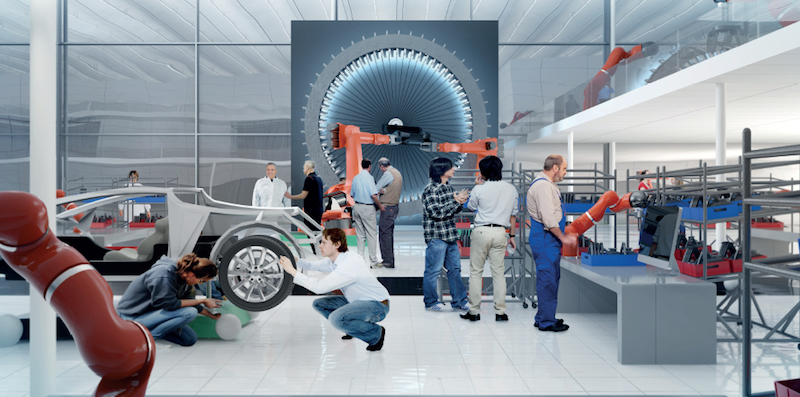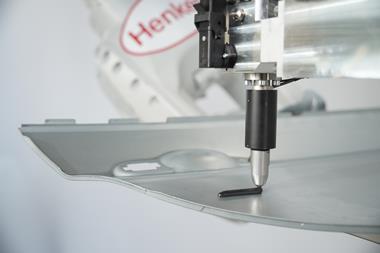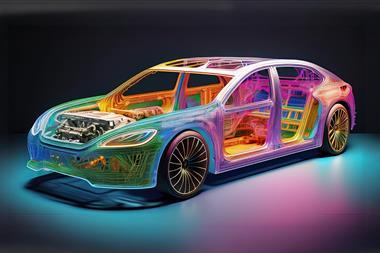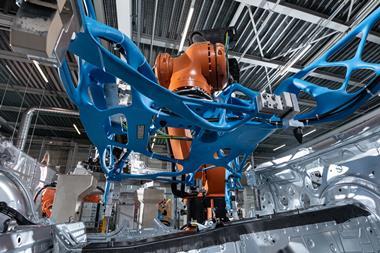
As Industry 4.0 continues to reshape production processes and our working environments, experts in measuring and imaging technology can offer solid support
 Industry 4.0, cyber-physical systems or the Internet of Things: the paradigm shift in the production economy is cheerfully progressing under various names. What they all refer to is the digitalisation and networking of production processes and environments. The idea is by no means new.
Industry 4.0, cyber-physical systems or the Internet of Things: the paradigm shift in the production economy is cheerfully progressing under various names. What they all refer to is the digitalisation and networking of production processes and environments. The idea is by no means new.
The difference is that there are now technologies that offer a level of precision, speed and flexibility to a previously unknown degree. In large companies within the automotive industry, these processes are already offering enormous efficiency and diversity. These companies will set the pace for numerous supplier industries and thus take Industry 4.0 to small and medium-sized businesses. It is precisely here that the attractive potential for value generation needs to be made visible and concerns and fears assuaged. One important aspect is that although we may always refer to an “industrial revolution”, Industry 4.0 is far more about an industrial “evolution” that demands tailor-made solutions. Production measuring technology and sensor technology are key tools on this path.
ARENA2036In 2036, the motor car will reach its 150th anniversary. Inspired by the milestone, stakeholders from science and the automotive industry in Germany have created a public-private partnership called ARENA2036. FARO is among the key project participants, joining the University of Stuttgart, the Fraunhofer Society, Daimler, Bosch, Hewlett-Packard, KUKA, Siemens and many more. Its main goal is to prepare the way for the automotive production of the future in order. FARO innovation manager, Dr. Denis Wohlfeld is coordinating the project known as Digitaler Schatten (Digital Shadow).
“It’s basically about getting a permanent, updated actual model of the reality which enables planning, simulation of the factory of the future,” Wohlfeld explains. He believes that to be more flexible and agile than the rigid production lines of today the factory of the future must be able to optimise itself: “By having sensors that scan the shopfloor and also access the IT systems from the whole network and the hardware installations, the data flows together to form one model, a digital representation of the entire factory.”
“If we, for example, measure a large car plant, we can create a point cloud which gives us visualisation, but not automation. For automation we need something more, we need to find objects within this point cloud – to segment it and identify it. We are working on algorithms where we can extract 10,000 points, the database gets updated on where e.g. a robot is and the automation model of the factory can update itself and run a new simulation model overnight to react to changes in order.”
"To do it correctly in a virtual way we really need to know the surroundings... we have to merge network data with geometric data to see everything on a virtual scale." - Denis Wohlfeld, FARO
Wohlfeld describes the limitations of today’s lines: at the beginning, production is planned for a certain volume of cars per month. Production begins with starting phase which is well below the eventual target is number, so the production line at this stage is too big. Then, if the vehicle model is successful it might hit the maximum capacity of the production line. However, delivery time for some customers is extended. Finally, towards the end of the lifecycle the numbers will stepped down and, once again, the production is bigger than necessary.
“At no point in time was the capacity correct. So our goal is to be adaptive and flexible, less fixed on which model and which line. Instead, we can break the line into islands. The product navigates through the islands, bottlenecks are avoided as the system adapts.”
“If we look at one robot cell, we have to deal with 20 different vendors, there’s no way currently to get a consistent and complete digital model, the data may not be compatible, the tools not compatible, different protocols, and that’s just the network data, we don’t have it merged with the geometric data on the infrastructure of the factory itself.”
Wohlfeld gives the example of a pillar. It doesn’t have a network interface but it is important when testing if a robot fits its space and can physically move, without collision. To test on the floor will disrupt production, so it must be done virtually: “To do it correctly in a virtual way we really need to know the surroundings. In the past, we’ve seen installations with paths for the robots which collide with cables. This why we have to merge network data with geometric data to see everything on a virtual scale.”
Giving the factory eyesOn the path towards Industry 4.0, FARO experts in measuring and imaging technology can offer solid support with high-precision instruments both for tactile and for non-contact recording of objects, whether by means of visual imaging procedures, tactile measuring arms or laser scan technology. In addition, there are various software solutions that enable both communication between all measuring systems and interfaces to all common software applications. Measured data can be recorded quickly where required in multi-sensory mode and optimally prepared for further use. This cuts complex programming tasks and costs for system integration.
The FARO Factory Robo-Imager Mobile is one example of the possibilities the combination of optical measuring systems and a collaborative robot arm offers. Various measuring tasks are being successively integrated into production as a mobile measuring station along the production line. The Robo-Imager reduces the need for laborious measuring in the measuring room, for example. As a fixed installation, it serves for continual quality testing along the manufacturing line, and can thus support the automation process down the line. Intelligent interfaces ensure that the data gathered can quickly be made available for further use in all common software applications.
Reshaping working environmentsAutomation will change the workplace structure within the company. In fact, the question of the precise impact in relation to the labour market cannot yet be answered definitively. Certain trends are nevertheless taking shape.
Monotonous routine tasks or activities that can be risky to health or burdensome when carried out by people are increasingly being executed through automated processes or with the help of robots. Here, collaborative robot systems offer an entirely new form of cooperation between human and machine. Intelligent assistants ensure a high level of reliability and productivity, which strengthens companies at wage-intensive locations and thus secures jobs. A further plus point is that if the employees are relieved optimally by means of automated solutions, this creates more freedom for areas of work in which their creativity and efficiency is required, be it in the development of new products, services or processes.
However, Industry 4.0 will not succeed without human labour when it comes to overseeing the automated processes. The control elements for managing the machines will thus become much more important, for example. With their user-friendly interfaces, they ensure that processes run intuitively and can be controlled safely. The latest generations of control elements can be designed to be so highly flexible that technicians as well as measuring and software experts will be able to use them with the utmost precision. Current human-machine interfaces, for example, make use of the properties of user interfaces from entertainment electronics.
If these learnt structures are integrated into areas of work, they can help employees with the application and can boost motivation and the willingness to assume responsibility. Ongoing further training measures will make a key contribution to a company’s success in the future as well. Yet with user-oriented control elements, labour and therefore costs can be reduced considerably.







































